Culture
Nowruz
Published
3 years agoon
By
Sadia Jamil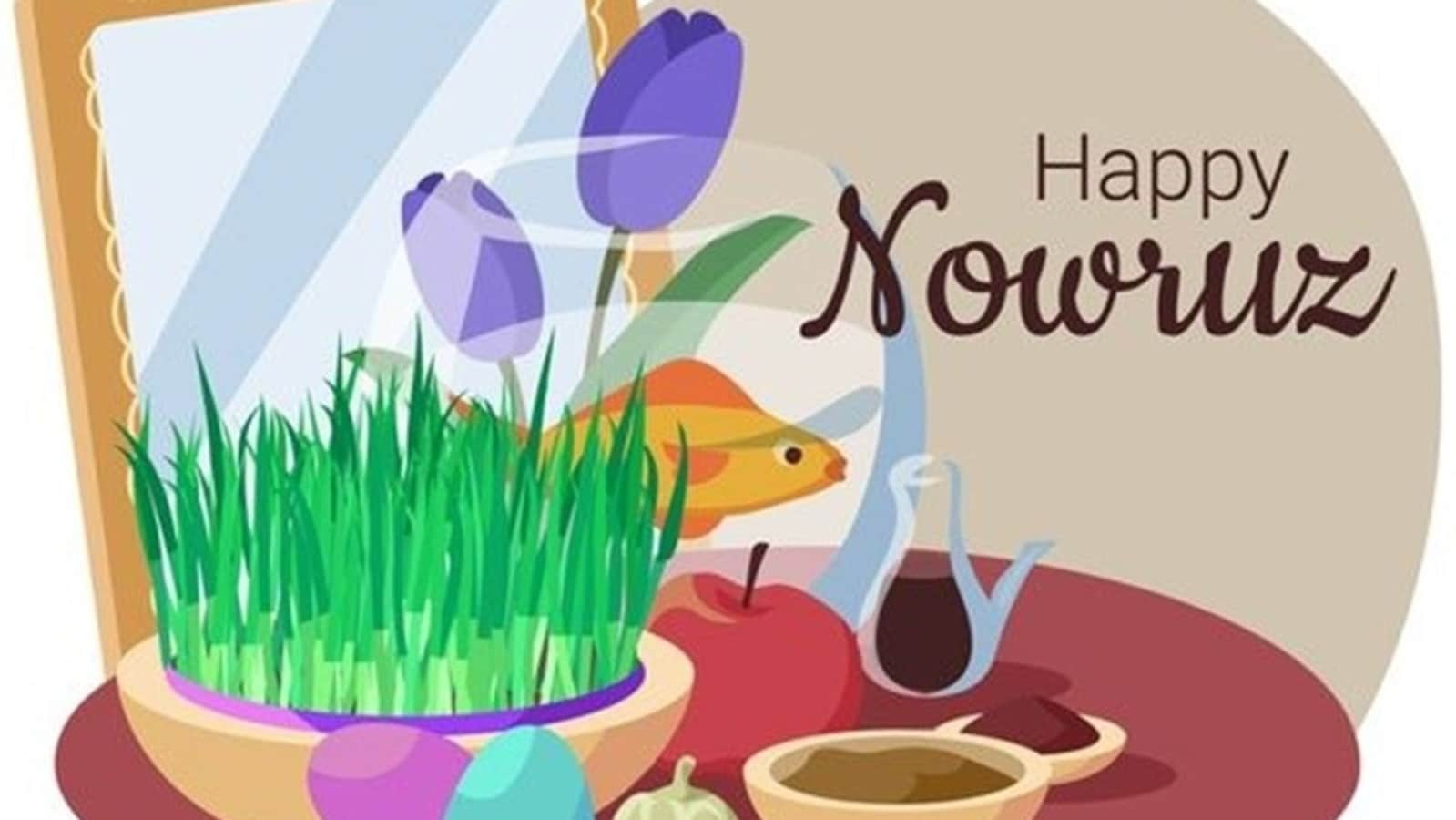
A New Day
To celebrate a festival means to live out, for some special occasion and in an uncommon manner, the universal assent to the world as a whole. —Josef Pieper
Many writers and poets have equated the gruesome winters with agony, hopelessness, and bleakness. On the other hand, springtime has always been equated with hope, happiness, and cheerfulness. Everything looks amazing in the springtime. The fragrance of lively flowers summons elegant butterflies to flutter; trees sway happily and embrace the warmth of the sun to nourish the sprouting flowers; birds sing a song of hope and true devotion tirelessly. The day king (sun) in all its magnificence spreads its rays to bring life back and rejuvenate every part of the world.
Since time immemorial, Nowruz has been celebrated by several ethnolinguistic groups across the globe. Many countries, including Albania, Azerbaijan, Kazakhstan, Iraqi Kurdistan, Georgia, Kyrgyzstan, Mongolia, Tajikistan, Afghanistan, India (Gujarat and Maharashtra), Pakistan (Gilgit-Baltistan), and Iran, have always given special attention to this mesmerizing festival.
The word Nowruz is a combination of two words: “Nav” means new and “Roz” means day, which collectively makes Nowruz mean “new day.” According to the Persian calendar, a new year starts on March 21. Some historical records show that the word Nowruz has been named after the legendary king of Persia, Jamshed Navroz (fourth shah of the Pishadadian dynasty of Persia). An erudite journalist, Erin Blakemore, in her article “This ancient festival is a celebration of springtime-and a brand new year,” jots down ” Nowruz, also known as the Persian New Year, has been observed for more than 3,000 years as the victory of spring over darkness”.
Some historians posit that Nowruz has been celebrated for more than 15,000 years, before the creation of the Persian Empire. Several historians associate Nowruz with Zoroastrian culture. Zoroastrianism was a religion that was practiced in Persia before the advent of Islam in the region. After the Islamic conquest, the followers of Zoroastrianism migrated to different places, and this resulted in the spread of this festival in the diverse corners of the globe. Doubtlessly, Nowruz was one of the holiest days for ancient Zoroastrians. Moreover, on the day of Nowruz, the ancient Zoroastrians in Iran festoon a table with seven different items known as Haft-Seen. The word Haft means “seven,” while “seen” is “s” in the Persian language. The items bedecked on the table include; seed sprouts (which symbolize rejuvenation), senjed (Persian Olive, which symbolizes a spark of love), garlic (safety), apple (fertility), sumac (devotion), vinegar (endurance), and samanu (wealth).
Besides, the Kurdish people believe that on the day of Nowruz, Kawa the Blacksmith overpowered the barbaric king Zahak. He liberated the region from Zahak’s malevolence and unkindness. The legendary king Kawa set a bonfire on the peak of the mountain to celebrate his victory against brutality; from that day onwards, the Kurdish people set bonfires on the day of Nowruz. Furthermore, during the rule of the Fatimids, Navroz was celebrated as a special festival in Syria and Egypt. In India, the Mughal Emperors, particularly Jahangir and Akbar, enthusiastically celebrated the Nowruz festival during their rule, but Emperor Aurengzeb restrained his subjects from celebrating the festival. Mumtaz Ali Tajddin writes, “Nowruz has been seen to be celebrated by a number of Shi’ites and Sufis.” The Bektashi Sufi resides in present-day Turkey. For instance, it celebrates Nowruz not because of the New Year, but to commemorate the birthday of the first Shia Imam Ali bin Abu Talib”. There is another theory that suggests that the day of Nowruz was the happiest day for the ancient Iranian framers. After the end of bleak winters, framers welcome the arrival of springtime with much fervor and fun. The arrival of spring means the start of agricultural activities for the Iranian farmers. Interestingly, in 2009, UNESCO included the holiday on its Representative List of the Intangible Cultural Heritage of Humanity due to its utmost significance.
Different ethno-linguistic groups celebrate this day according to their traditional norms and values. Therefore, celebrations vary from one place to another. It has been rightly said that culture is an evolving process. It changes over time, but some core cultural beliefs and practices do not banish at all. They become an unalterable part of cultures and civilizations, making them unique and mysterious. You may have noticed a garden full of vibrant and colorful flowers. It looks enthralling and soothing. Likewise, the world looks beautiful in its diversity. The very differences among the cultures make the world look splendid. Let’s have a closer look at the celebrations that take place on March 21 across the globe.
The inhabitants of Persian-speaking countries, particularly Iranians, celebrate this day with great enthusiasm and fervor. All the family members gather at the exact moment of the vernal equinox to celebrate the new day with prayers known as Tahvil-i-Sal. The dwellers of Gilgit-Baltistan celebrate Nowruz with great zeal and zest. In this connection, women prepare palatable cuisines and distribute them among relatives and neighbors. In addition to this, women and girls hang ropes on trees and swing to make the day more joyous. This day seems incomplete without mentioning the excitement of children who eagerly wait for this day. Little beautiful girls are clad in vibrant colors like pink, scarlet, purple, green, and white. These little fairies giggle and enjoy the day to its fullest. While little boys clad in white shalwar kameez, beaming from eye to eye, look like brave princes.
The most interesting part of this day is “Chi-Chi”. A newborn dressed in glittering and sparking clothes is placed on an elderly man’s shoulders. He carries the newborn a short distance and gives his blessings to both the newborn and his/her family. Let’s have a look at the Nowruz celebration in Baltistan. The residents of Baltistan celebrate this day quite differently. The boys are supposed to break painted eggs brought by each competitor who is taking part in this competition. To win this competition, each one strives hard to break an egg with an egg, and the one who breaks a plethora of painted eggs wins the competition. More importantly, on this special occasion, polo games are organized to add more color to this splendid day. Both the polo players and spectators enjoy this blissful moment. Succinctly, this amazing festival is all about devotion, rejuvenation, happiness, and blessings.
About Author
Sadia Jamil
The writer is a graduate of the Department of Politics and International Studies, Karakoram International University, Gilgit.
You may like
-
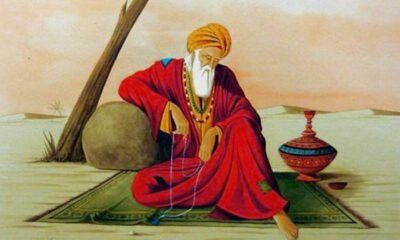

Rumi, the Moral Psychologist
-


Poor Winter Maintenance of KKH Risks CPEC All-Weather Trade
-
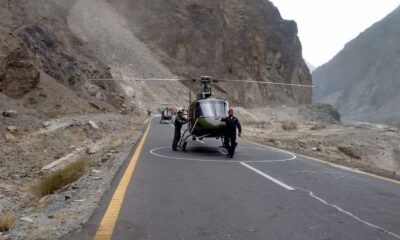

Pakistan Army Launches Rescue Operation, Missing Passengers in Deosai Found Safe
-


PM Shehbaz Sharif Visits Gilgit-Baltistan, Honors Martyrs, and Launches Development Projects
-
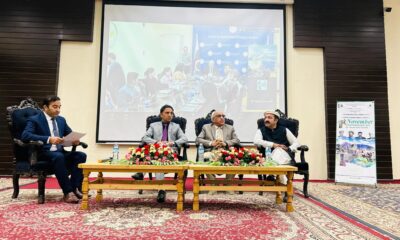

CISS-KIU Seminar: A Tribute to Gilgit-Baltistan’s Freedom Fighters of 1947
-
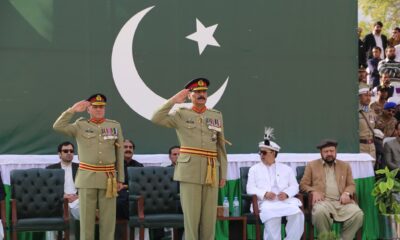

Gilgit-Baltistan Marks 77th Liberation Day from Dogra Rule
Arts, Culture & Heritage
Exploring Baltit Fort: A Jewel of Hunza Valley
Published
7 months agoon
October 10, 2024By
Zeeshan Alam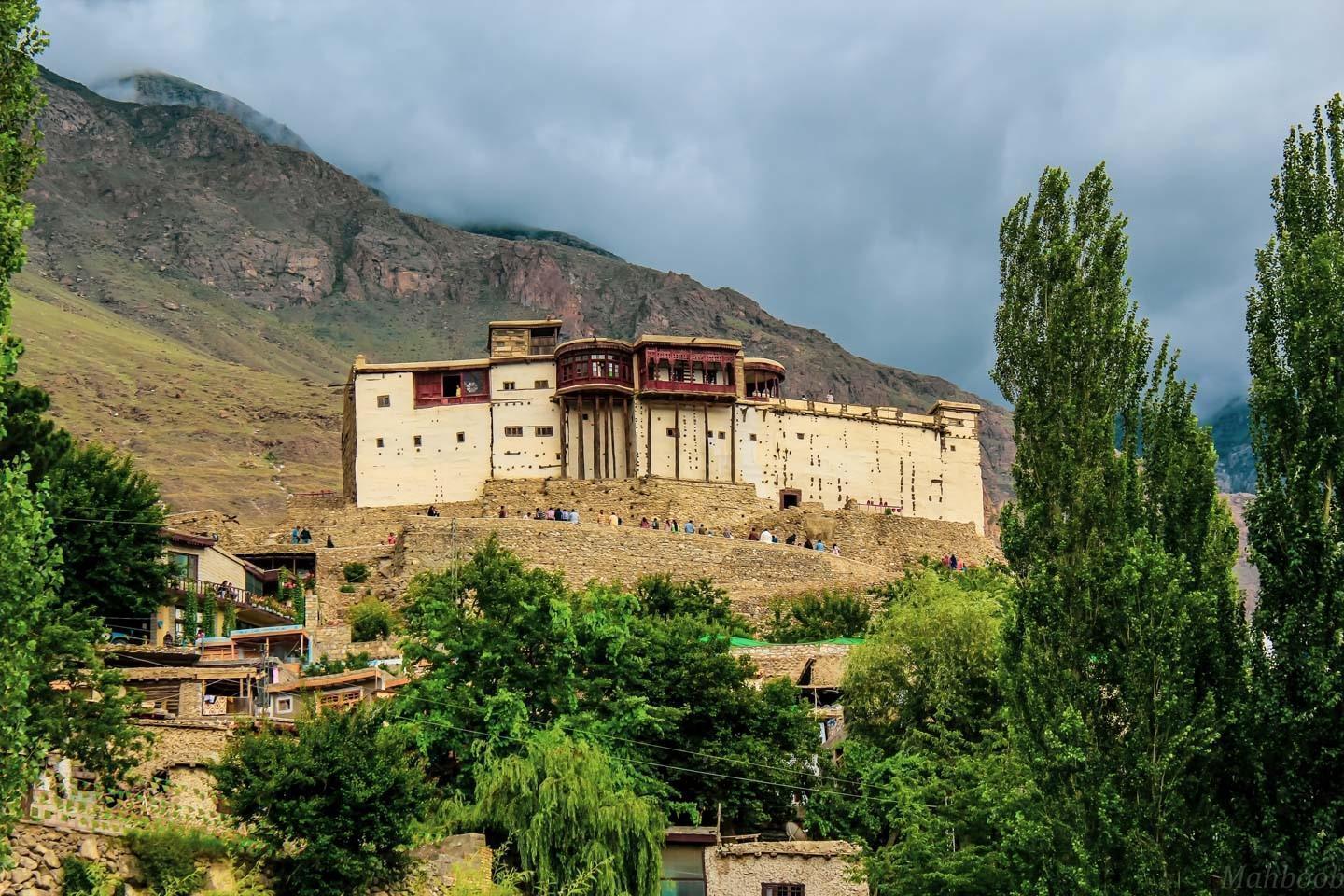
Nestled in the heart of Pakistan’s breathtaking Hunza Valley, Baltit Fort is a testament to the region’s rich history and cultural heritage. This stunning fort, with its majestic wooden architecture and panoramic views, offers visitors a unique glimpse into the past while providing a gateway to the natural beauty of the surrounding landscape.
A Glimpse into History
Baltit Fort dates back over 700 years, originally built as a defensive structure to protect the local population. It was the residence of the ruling Mirs of Hunza until the mid-20th century. The fort’s design showcases a blend of Tibetan and Central Asian influences, reflecting the diverse cultural tapestry of the region. In 1993, it underwent extensive restoration, making it a significant site for history enthusiasts and casual visitors.
Architectural Marvel
As you approach the fort, you’ll be captivated by its distinctive architecture. The intricate wooden balconies, colorful frescoes, and robust stone walls create a striking visual appeal. The fort is built on a hillside, which adds to its charm and offers stunning views of the surrounding peaks, valleys, and the picturesque Hunza River.
A Journey Through Time
Once inside, you can explore various rooms and halls that were once occupied by the ruling family. The museum within the fort showcases artifacts, traditional clothing, and tools used by the locals, providing a deeper understanding of the region’s heritage. Each room tells a story, making your visit a journey through time.
Breathtaking Views
One of the highlights of visiting Baltit Fort is the breathtaking panoramic views it offers. The fort overlooks the vibrant landscapes of Hunza Valley, with terraced fields, orchards, and the majestic Rakaposhi and Ultar Sar mountains in the background. Be sure to bring your camera; the vistas are simply unforgettable.
Cultural Significance
Baltit Fort is not just a historical site; it is a cultural hub for the community. Throughout the year, various cultural events and festivals are held here, showcasing local music, dance, and art. Engaging with the local people and participating in these events can enrich your experience and provide insight into the traditions of the Hunza Valley.
Tips for Visiting
- Best Time to Visit: The ideal time to explore Baltit Fort is from April to October, when the weather is pleasant, and the landscape is lush and vibrant.
- Getting There: The fort is easily accessible from Karimabad, the main town in Hunza. You can either hike up the hill or take a short drive.
- Guided Tours: Consider hiring a local guide who can provide in-depth knowledge about the fort’s history and significance.
Conclusion
Baltit Fort is more than just an ancient structure; it is a symbol of the enduring spirit of the Hunza Valley. Its historical significance, architectural beauty, and stunning natural surroundings make it a must-visit destination for travelers exploring Pakistan. Whether you’re a history buff, a photography enthusiast, or simply seeking to connect with nature, a visit to Baltit Fort will leave you with lasting memories and a deeper appreciation for this enchanting region. So pack your bags and embark on a journey to this extraordinary fort—you won’t be disappointed!
About Author
Zeeshan Alam
The writer is a co-founder of Grey Matter Ventures. He works as an account manager, helping to build strong client relationships. In his free time, he enjoys freelance work and graphic design. He is also passionate about social work and spends time helping his community.
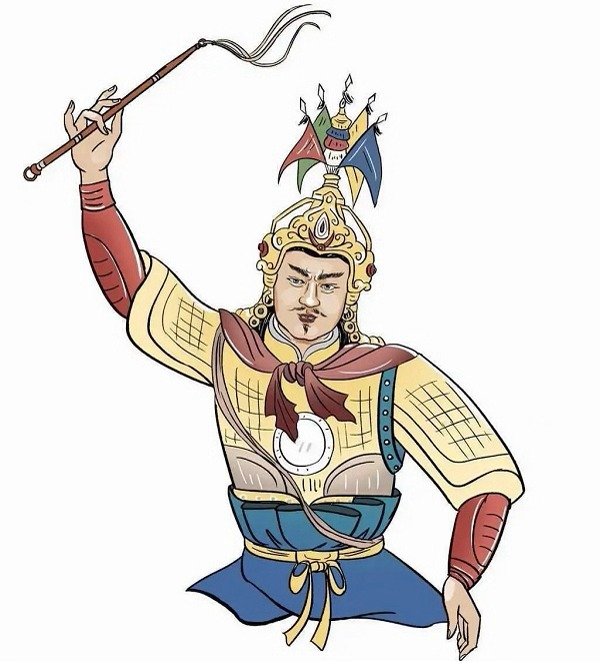
Like other regions of Tibet & Magnolia, the Epic of Kesar-the son of god has been equally popular in Baltistan-the Little Tibet, and Gilgit and Hunza (Brushal) since its creation. For centuries and millenniums, this grand epic was not written but transmitted orally from one to the other generation like a holy gospel.

The Epic of King Kesar possessed a great importance in the societies of Baltistan from the very beginning to late 19th century AD, the time when a great change started emerging in the region by introduction of Islamic and modern Persian and Urdu Literature. In the past, this epic was the prime Literature of all Tibetan regions including Baltistan and in Brushal i.e. presents Gilgit & Diamar Divisions. as and had a very important role in forming the local culture, traditions, games and sports, politics and the social structure and it remained the greatest source of entertainment as well.
I had the opportunity to record the epic in 1980 when I accompanied with Dr.Renate Sohnen (Tubingen University Germany) who visited Baltistan collect and record some legends and folk songs of Baltistan. We recorded the Kesar epic from late Abdur Rehman Mistripa in Stak village of Baltistan who was the last master epic reciter. Dr Sohnen made two copies of the epic. We both had one copy each for our literary use.
I had been going through this epic for several years and I had the opportunity to read some books on the mythology of ancient Greece, Egypt, India and history of Persia as well and some other books. Study of these books increased my interest and knowledge in epics and legends and acquainted me with the high value of this epic as well.
In the 1st International Symposium on King Kesar (Chinese Gesar) Epic in Chengdu China-1988, I presented my paper “A Survey of the Legendary Kesar in Baltistan Area” as well as sang a song from the epic showing the Kesar singing tradition in Baltistan, both were approbated by many scholars from outside as well as inside the China .
It is strange to note that the Epic of King Kesar (Baltistan version) contains many subjects, events and characters similar to Greek and Egyptian Mythology as well as ancient Persian history. In this regard, this epic covers many characters, events of Golden and Silver Ages of Greek Mythology, the early time of the Pharos of Egypt and the beginning of the Persian Empire by Cyrus the Great. For example Egyptian gods and deities Khnum, Horus and Anubis are very similar to Phasangkha Raskes (father of Kesar), Khre-bu Khraqthung, Wamoe-bu Joli (uncles of Kesar) etc.; AND the Symplegades (clashing mountain) and Braq-sgo Jiring-mo in Nar village of Skardu, and Golden fleece of ‘Jasson and the Argonauts’ and quest for the golden fleece of Brong Xampa in Kesar Epic look very same. Moreover, Valhalla of Northern (Scandinavian) Mythology and Yashirat Katsa look very similar. We find two abodes of Kesar in the epic. First Yashirat Katsa a spacious cave or rock-cut house, during his youth and later his castle Shel-kar Ldem-khar during his lordship. Shel-kar Ldem-khar means a hanging castle of white crystals, which clearly gives the idea of a dwelling place in the high crystal mountains. It is also analogous to the rock-dwellings of the Samoud people, whose time period has been reckoned as 2200/2000 BC. Moreover, a tale in this epic i.e. the abduction of the goddess Lha-mo Brung-mo, the wife of Kesar by the Turkish king Plaghal-lde and her recovery by Kesar look very similar to the abduction of Sita the pious wife of Ram Chanderji of Indian Saga “Ramayan” by Rawan of (Sri) Lanka and recovery of her by Ram Chanderji. But here, Kesar stands much higher than Ram Chanderji, as he reached the Turkish capital, plundered Turkish army and brought back his wife single handedly overcoming all magic-powers, human and monstrous obstructions and other hazards. It is generally believed that the story of Ramayana came in to being during pre-historic time of India. Keeping in consideration the above similarities of characters, events and social lives, it can be convincingly said that the epic of Kesar was composed or created in between 2000 BC; and 1500 years BC.

Similarities of matters, events and characters in this epic with the mythology of Greece and Egypt give us a clear indication that during the prehistoric time or precisely in the 1st and 2nd millennium BC; there was a strong relationship between the east and the west, and they used to influence each other through trade and tourism through the Silk-routes. It is very interesting to read that an outstanding research scholar of Kashmir Professor Fida Muhammad Husain and Suzanne Olson from New York who are particularly involved in researching the ancient history of the sub-continent and its northern bordering places like, Ladakh and Kashmir, in their books. Prof. F. Hansen in “The Fifth Gospel” writes (page -8) “Contacts between East & West: From time immemorial there have existed contacts between the East and the West. Besides the sea routes, there were land routes for commercial as well as political purposes. It is a historical fact that there have been continuous migrations from West to East, during ancient and medieval period of our history, in search of better natural resources of food, water and wood. We have scanty references about actual routs used by the nomad tribes during their migration. However, it is clear that there existed links between the Middle East countries with India, Afghanistan, Central Asia and Tibet. (Page-9) It may be pointed out that since ancient times, there existed an easy highway from Arabia to Persia, then to Afghanistan and North India to Kashmir to Tibet and the Pamir’s”. (Page-199) “The Silk Route: During the ancient world, the countries in the south west Asia, formed one compact unit. During the 6th century BC; Iran, Afghanistan, Pakistan and some regions of the northern India formed part of the Achaemenian dominion of Cyrus and Darius. The people living in this vast tract of land, had close links by way of trade, commerce and culture.”.Prof.Hasnain further writes “from ancient times, the valley of Kashmir had established commercial relations with Afghanistan, Iran, Central Asian countries. Its capital lay on the Silk Route, which connected East and West. Many centuries before the advent of Jesus Christ, the armies of the Greeks, penetrated in to North India and the Indus basin through land routes of the past”. (200) “Herodotus knew the people of Kaspira or Kashmir”. “During the reign of Cyrus, the Great, the whole region from Thebes to Taxila in the Punjab came under the domination of the Persians. With the extension of the Persian empire by Darius, right up to the North-western regions of India, the valley of Kashmir including Hunza, Nagar and Chiral came under direct control of the Persians”. “It may be pointed out that the Mediterranean people started moving and spreading towards East, North and the West, in the beginning of Neolithic age. One branch migrated towards North-west of Indian sub-continent. More-over Professor Hansen in his another marvelous research work (book) “Roza-Bal” has given the detail that how the Christ was narrowly survived from the crucifixion and after healing from his wounds flee from Jerusalem to the east out of Roman Empire domination with his holy mother and followers and finally arrived in Kashmir, Srinagar where he married with a Kashmiri lady “Marjan” spent some years, and finally took his last breath and was buried in a place which is well known by “Roza Bal” –the tomb of an unknown (or forgotten prophet).These quotations from The Fifth Gospel and Roza Bal manifest the human relationship between the West and the East, including the area in the North-west of Indian sub-continent which include Kashmir, Ladakh, Baltistan and the valleys of Hunza, Nagar and Chitral in the antiquity. It is also historical fact that the first Persian Emperor Cyrus –the Great had conquered the area in the north of Persia and crossed Bolor range and conquered the areas on the right bank of River Indus and included in his empire, which certainly put some historical and cultural influence of the west over this lofty mountain valleys.Thus the migrants from the west i.e. Egypt, Greek controlled area of Palestine and the Arabs brought their myths and stories with them which were incorporated in the local fables and myths of the mountainous areas of Hindu Kush and Himalaya and a new epic was evolved under the name of Kesar.

During the study of this Epic, it was conceived that though Kesar had a very complex nature and habits , he used all type of sorcery, tricks and seduction to overcome his opponents but his fashion of activities and adventures cannot be measured on the scale of good or evil of our time. If we l look into the purpose of sending him to this world-the world of human being, his adventures against the oppressors, the devils and monsters, who were the symbols of evil, Kesar’s deliverance of safety to the common human beings and making the world a peaceful realm, give us a clear clue that he might be one of the savior and an apostle of God in his own time, as the Holy Quran says “And certainly, we raised in every nation an apostle. – (The Bee; verse No.36)” However, the readers and the scholars may give their best judgment regarding the personality, life and mission of Kesar.
The name Kesar (Chinese pronounce it Gesar) looks itself, a western oriented name. And as I believe, it is a transliteration of Caesar of Roman or Kisra of Persian history, like Qaiser is the Arabic version of these titles. In Tibetan Dictionaries (like Jaschke) Kesar has been explained in two different ways i.e. (a) It is actually the corrupt form of sKey-sar which means a ‘re-incarnated” or new-born (re-born) one and (b) Name of a wild flower grown in the Tibetan mountains. In an Urdu-English Dictionary, Kesar has been termed as Saffron and in a dialect as a Lion (Pl. see Kitabistan 20thCentury STANDARD Dictionary, Lahore). However, it is very difficult to find out the correct etymology or origin of this name ‘Kesar” at the moment.
The manifestation of this Epic-which is termed as the Kesar -Baltistan version and Hunza version also, is that, it is absolutely a non-religious epic. It has neither any tradition of Islam nor any thing of Buddhism. However, it has many traditions of Shamanism. All the other versions of this Epic found in other Tibetan areas, China, Magnolia and India have been mashed and blended with Lamaism to make it a Buddhist Epic, thus mutilating its originality and historical and social values.
I believe that it is a great epic and is like a treasure in the bottom of sea and has no value unless this treasure is brought to surface and presented before its admirers. I bring this epic before the world readers and started translating it in English so that more and more readers could read it. I finished it incurring several years. In August 2017, two gentlemen from North Korea Mr.Byun, JiTae of Haroojai Club with another member, who were in search of an English version of Kesar Epic visited me and after a brief discussion, we made an agreement and they paid me 2000 US$ for my “permission” to translate it in to Korean language and produce as book for the members of Haroojai Club Seoul, Korea. This deal manifest that how much this great epic “Kesar-the son of god” (Baltistan version) possess a dynamic value in to the literary societies of the world
In 2020, the University of Baltistan, Skardu acquired my permission and published it under the title of “Kesar-the son of god” under their program of “Preservation & Promotion of Balti Folk Literature”,
About Author
Syed Muhammad Abbas Kazmi
The writer is a renowned intellectual from Baltistan and the author of the book ‘Kesar-the son of god’.

Rahma Khan
Off the radar from the World Travel Guidebooks, Pakistan is still fighting its own battles to revive the tourism industry in the country. Home to some of the highest mountain peaks in the world, a thriving cultural and second to none hospitality, Pakistan has everything to offer to the travellers. However, one baby step at a time, the country has reached a certain small level of success to boost up local as well as international tourism in the last couple of years.
I am Pakistani by nationality but I have barely spent any time of my life in the country. Earlier this year, I packed my bags to venture out on a solo adventure to the picturesque fairytale-like Hunza Valley in Northern Pakistan. I was aware of the fact that traveling solo in Pakistan is not very straightforward just like anywhere else in the world. The only advantage I had on my hands was a little bit more familiarity with the local language as compared to other foreign tourists.
Hunza Valley in Pakistan is situated in the independently administrative state of Gilgit Baltistan. I started off my journey from Islamabad Main Bus Terminal towards Gilgit Baltistan, which was a long 19 hours mostly off-road drive towards the town of Chillas. The small town of Chillas lays a few hours’ drive ahead of Hunza valley. It sits in the lap of the Karakorum, Hindukush and Himalayan giants. I visited the ‘Junction Point’, a unique place on earth where three mountain ranges meet and two rivers, River Indus and River Gilgit merge together.
The next morning, I continued my journey towards Hunza with a private driver with a car. There is also an option to use the NATCO bus to reach all the way till Hunza, but it is rather a longer alternative than traveling in a car. The mountains in Gilgit Baltistan are dry and barren, however, as I approached towards Hunza, the entire landscape changed to giant snow-capped peaks with River Gilgit flow at their foothills. I made a pit stop at Mt. Nanga Parbat viewpoint, the 8th highest mountain peak in the world.
Just a few miles away from Hunza comes the Mt. Rakaposhi.This is a good place to stop over for lunch with a great view of Mt. Rakaposhi right in front. Also, luckily I happened to visit the Hunza Valley during the cherry blossom season, so things turned out for me more fairytale-like. And yes, you can see some really beautiful cherry blossom in Pakistan without any tourists, unlike everywhere else in the world!
Entering upon Hunza, my first stop was at Altit Fort, a 6th-century fort, which was a winter house for the ruling king. After taking a very informative and well-organized guided tour of the fort, I sipped a local apricot drink with views that will blow off anyone away! Also, when you’re at Altit Fort do not forget to try ‘Chamoos’ which is an apricot juice made with locally grown apricots of Hunza.
The final place to check off the list before I call it a day was to visit Eagles Nest, a mountain top viewpoint best known for some spectacular sunrise and sunset views over the Karakorum Mountains. And definitely, the views didn’t disappoint at all!
Next day, I hopped on again on the road for a three hours’ drive towards the very end of Pakistan, the Khunjerab Pass (Pakistan-China border), which also happens to be the highest land border crossing in the world. It is a true magnificence of engineering expertise by Chinese and Pakistanis to build Khunjerab Pass at such a high altitude and challenging weather conditions. To reach Khunjerab Pass, you’ll pass through the Khunjerab National Park, the third-largest national park in Pakistan
The final two stops of my Hunza trip comprised of a boat ride in Attabad Lake, a lake which was formed by glacier melting and flooding in 2010. The turquoise water of Attabad Lake reminded me of the beautiful shade of blue I saw in the Maldives; however, the lake drowned more than thirty small villages, which makes it a tragic beauty.
No trip to Hunza Valley is complete without visiting the Hussaini Bridge, termed as the scariest suspension bridge crossing in the world. However, the view it offers makes it completely worth crossing. I managed to reach halfway across the bridge, but extremely cold winds and slight fear of height didn’t make me proceed any further. Nonetheless, the view of the Passu Cathedral or famously known as the Passu Cones of Hunza made my effort absolutely worth every single step on that bridge.
Traveling as a solo female in Pakistan can be challenging at times due to lack of proper tourism infrastructure, but it can never be unsafe. North Pakistan, particularly, Hunza Valley is the booming tourist hotspot in the country with extremely helpful and hospitable locals who will welcome you with open arms. Pakistan is a land of natural beauty and wonders, so add it in your bucket list now to experience the most of this unexplored, untouched gem of Asia.
Rahma Khan is a travel blogger, and freelance independent journalist from Karachi based in Canada. Working as an engineer during the day and a writer by night, Rahma loves to solo travel whenever she gets time in between. She share her travel tales on her travel blog ‘The Sane Adventurer’ and her work has been published in many international travel publications and magazines.
About Author
The Karakoram Magazine
The Karakoram Magazine seeks high-quality, unpublished,nonfiction, first person articles relevant to Gilgit-Baltistan and topics as varied as Geo Strategic & Economic Significance of GB, Arts & Literature, Tourism & Hospitality, Culture and heritage, Education and technology, Health & Wellbeing, Climate Change and Wildlife, Economic & Trade, Sports & Recreations, Youth & Women empowerment and Achievements of Illustrious People of GB in different fields etc.

Rumi, the Moral Psychologist

Poor Winter Maintenance of KKH Risks CPEC All-Weather Trade

Pakistan Army Launches Rescue Operation, Missing Passengers in Deosai Found Safe
Latest
-

 Tourism2 years ago
Tourism2 years ago15 Best Places to Visit in Skardu
-

 Arts, Culture & Heritage2 years ago
Arts, Culture & Heritage2 years agoTraditional women’s dresses of Gilgit-Baltistan
-

 Tourism2 years ago
Tourism2 years agoThe Ultimate Travel Guide to Gilgit-Baltistan: Land of the Mighty Mountains
-

 KIU Corner2 years ago
KIU Corner2 years agoA Guide to LMS KIU Student Login – KIU
-

 Current Affairs2 years ago
Current Affairs2 years agoStrategic Importance of the Wakhan Corridor
-
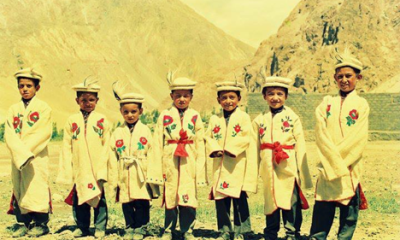
 Arts, Culture & Heritage2 years ago
Arts, Culture & Heritage2 years agoShuqa Simple but amazing winter clothing of Gilgit-Baltistan
-

 KIU Corner1 year ago
KIU Corner1 year agoEmbracing Challenges: Gul Rukhsar’s Remarkable Journey
-

 Opinion2 years ago
Opinion2 years agoThe Constitution of Pakistan: 50 Years of History, Significance, and Challenges


